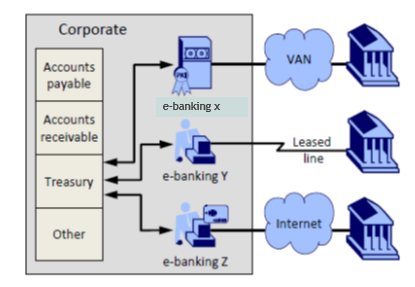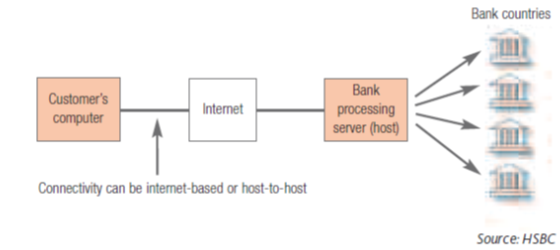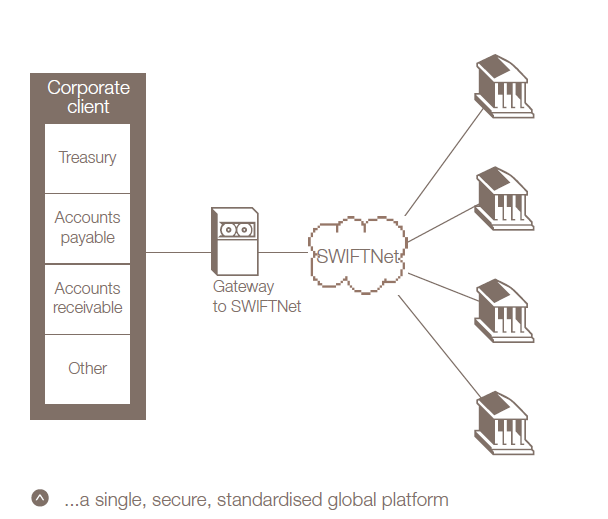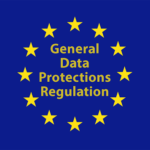FX-Risks Versus Technology
| 27-10-2017 | Treasurer Development | Minor Treasury @ Hogeschool Utrecht | Frans Boumans |
Today’s blog has been written by Daphne Piereij and Martijn Mullié, who are 2 students studying for the minor Treasury Management at the University of Applied Sciences in Utrecht. We welcome their contribution – it is good to see the youth engaging in Treasury matters! Here is their opinion on FX – risks versus technology.
“The one unchangeable certainty is that nothing is certain or unchangeable.” Those words were uttered by former US president John F Kennedy in a State of the Union address before Congress in 1962.
This still applies to the current state of the world. Especially within the financial markets and with FX Risks. Managing these risks have been completely revolutionized the past decades because of the new innovations in technology.
Traditionally traders manually update their volatility surfaces and bid-offer spreads, and that default pricing would have gone directly out to clients. More efficient is to use the electronic market data and automate much of that process, particularly in the most liquid currency pairs, creating a more transparent, data-driven practice.
According to McKinsey these are the trends in FX risk management with evolving technology and advanced analytics:
Big Data
Faster, cheaper computing power enables risk functions to use reams of structured and unstructured customer information to help them make better credit risk decisions.
In the future while this technology evolves and the quality of analytics of big data becomes better it will be easier to manage FX risks.
Machine Learning
This method improves the accuracy of risk models by identifying complex, nonlinear patterns in large data sets. Every bit of new information is used to increase the predictive power of the model.
Keeping in mind the words of former president John F. Kennedy the world will never be predictable and neither will the financial market. Because it’s not ran by machines but by humans, and humans are in general unpredictable. Which means this process has no end until the financial markets are managed by machines which are predictable.
Crowd Sourcing
The Internet enables the crowdsourcing of ideas, which many incumbent companies use to improve their effectiveness.
The internet can motivate people with challenges to work together to make algorithms for analytic functions so market data can be used more efficiently. It’s not always the most effective method to use the in-house developers to create algorithms. To make the most effective FX risk management algorithms is very hard and time consuming. Crowd Sourcing enables a whole different aspect to create algorithms, using more brains to create these immensely complicated methods to decrease FX risks.
Resources
https://www.mckinsey.com/business-functions/risk/our-insights/the-future-of-bank-risk-management
https://www.risk.net/risk-management/5276541/managing-fx-risk-how-to-prepare-for-the-unpredictable
Minor Treasury Management
More information about the minor Treasury Management at the University of Applied Sciences?
Please contact Frans Boumans.

Manager Minor Treasury Management @ University of Applied Sciences in Utrecht





 Currency volatility is a well-known uncertain component of international business. In the pre-euro era one could suffer severely by currency movements of its European neighbours. Corporations, dealing within euro countries, have diminished the currency exposure.
Currency volatility is a well-known uncertain component of international business. In the pre-euro era one could suffer severely by currency movements of its European neighbours. Corporations, dealing within euro countries, have diminished the currency exposure.
 As if the finance industry is not already facing enough challenges swimming though the sea of regulatory acronyms – BASEL iii, EMIR, MIFID ii, SOX, KYC etc. – a new directive is due to come into force on the 25th May 2018, namely GDPR.
As if the finance industry is not already facing enough challenges swimming though the sea of regulatory acronyms – BASEL iii, EMIR, MIFID ii, SOX, KYC etc. – a new directive is due to come into force on the 25th May 2018, namely GDPR.
 Op donderdag 9 november 2017 vindt de voorlichtingsavond voor de Postgraduate opleidingen, waaronder de opleiding Treasury Management & Corporate Finance, van de School of Business and Economics van de Vrije Universiteit Amsterdam plaats.
Op donderdag 9 november 2017 vindt de voorlichtingsavond voor de Postgraduate opleidingen, waaronder de opleiding Treasury Management & Corporate Finance, van de School of Business and Economics van de Vrije Universiteit Amsterdam plaats.

 Traditionally, banks provided the infrastructure to enable payments to take place. Nowadays, there are many different third party online payment services that compete directly with the bank models. We came across an interesting article detailing the rise of a mobile payment platform with a large customer base in China, which is bigger than well-known services such as Paypal. It is part of the Alibaba Group who already have a large presence in Europe via AliExpress – after making a large impact on European online shopping, will they make an impact on the payments systems?
Traditionally, banks provided the infrastructure to enable payments to take place. Nowadays, there are many different third party online payment services that compete directly with the bank models. We came across an interesting article detailing the rise of a mobile payment platform with a large customer base in China, which is bigger than well-known services such as Paypal. It is part of the Alibaba Group who already have a large presence in Europe via AliExpress – after making a large impact on European online shopping, will they make an impact on the payments systems? We all have these topics we know are important but never get the highest priority. Until it is too late. Cybersecurity is one of them. Do you want to be the treasurer named in the newspapers? Finding examples and input on-line is not hard. Only this morning these articles popped up through LinkedIn:
We all have these topics we know are important but never get the highest priority. Until it is too late. Cybersecurity is one of them. Do you want to be the treasurer named in the newspapers? Finding examples and input on-line is not hard. Only this morning these articles popped up through LinkedIn:
 According to a recent Juniper Research study “Blockchain Enterprise Survey”, IBM is seen as the number one provider of blockchain to business, well ahead of its competitors. These results are based on a survey of 400 business users from organisations actively considering, or in the process of deploying blockchain technology. Of the surveyed 43% ranked IBM first, followed by Microsoft (20%) and Accenture.
According to a recent Juniper Research study “Blockchain Enterprise Survey”, IBM is seen as the number one provider of blockchain to business, well ahead of its competitors. These results are based on a survey of 400 business users from organisations actively considering, or in the process of deploying blockchain technology. Of the surveyed 43% ranked IBM first, followed by Microsoft (20%) and Accenture.

